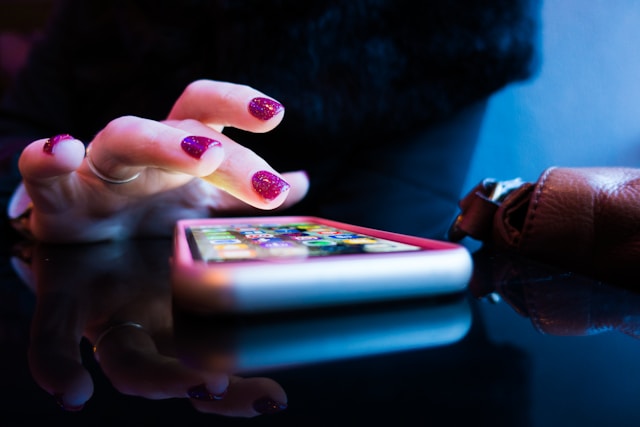For decades, we’ve spoken of “digital transformation.” It was a phrase bandied about with breathless certainty, often accompanied by visions of seamless integration and revolutionary efficiency. And, undeniably, connectivity has shifted dramatically. But the evolution isn’t merely about connecting devices; it’s fundamentally reshaping *how* we engage with the world, particularly when it comes to leisure and spontaneous interaction. We’re currently witnessing a subtle, perhaps even a profound, shift – a recalibration of what constitutes “play” and “social” within a landscape dominated by the handheld device. It’s a movement driven less by flashy marketing campaigns and more by the quiet, persistent adaptation of human behavior.
The Erosion of the Scheduled Experience
Let’s be frank: the traditional model of entertainment – meticulously planned evenings around television broadcasts, strategically timed trips to the cinema, scheduled game nights – is steadily diminishing. The appeal of anticipating a specific event is waning, yielding instead to the immediate gratification of available content. This isn’t dissatisfaction with content itself; rather, it’s a preference for agency. Individuals crave the ability to shape their leisure time, to access experiences on their own terms, and often, in fractions of seconds. Think of the shifts seen in reading habits – the decline in sustained, book-length engagements partly fuelled by the readily available bite-sized information dispensed through mobile devices. It’s a trend that resonates across numerous sectors, demanding a reimagining of how we curate and consume experiences.
The Rise of Micro-Interactions
These aren’t grand, sweeping events anymore. Interaction has become increasingly granular. A chance encounter with a captivating piece of audio while commuting. An unexpectedly delightful puzzle presented during a brief moment of downtime. A shared meme that sparks a spontaneous, lighthearted conversation with someone halfway across the globe. These micro-interactions – often fleeting and easily dismissed – are statistically significant. Studies have shown that people spend an average of nearly seven hours per day engaged with mobile apps – a figure that’s consistently rising. However, the *quality* of that engagement is often debated. We’re moving away from concentrated periods of activity towards a distributed pattern of shallower, more frequent interactions. The data points toward a new paradigm: a constant state of connection, punctuated by bursts of focused activity.
The Democratization of Creativity and Collaboration
Perhaps the most notable shift is the accessibility of creation and collaboration. Tools previously confined to professional studios or specialized workshops are now available to anyone with a smartphone. Consider the proliferation of music production apps, graphic design programs, and even sophisticated video editing software. This isn’t merely about casual entertainment; it’s fostering a new generation of amateur artists, storytellers, and creators. Remember the days when film production was considered an extraordinarily complex undertaking? Now, individuals are crafting narratives, crafting music videos, and experimenting with visual art with unprecedented ease. The result? A massive expansion of participatory culture, pushing against the traditional models of content creation and distribution.
Shifting Social Dynamics: Beyond the Group
Social interaction has undergone a transformation as significant as anything in the technological realm. Previously, “socializing” frequently implied gathering in physical spaces – coffee shops, bars, community centers. Now, a significant portion of our social lives occurs within the digital realm. While concerns about the impact of excessive screen time are valid, the reality is that for many, mobile apps provide a crucial lifeline to social connection, particularly for those geographically isolated or facing mobility challenges. The format of social exchange is certainly changing – moving toward smaller, more frequent, and often asynchronous interactions. Let’s look at some examples:
- Ephemeral Communication: Platforms like Snapchat and Instagram Stories promote immediate, transient interactions, prioritizing visual content and fleeting moments.
- Niche Communities: Apps connect individuals based on shared interests, hobbies, and even very specific passions, fostering localized communities that transcend geographical boundaries.
- Micro-Influencer Culture: The rise of micro-influencers – individuals with smaller, highly engaged audiences – reflects a shift away from celebrity endorsements towards authentic, relatable voices.
The Data Behind the Trend
It’s easy to dismiss this as anecdotal, to suggest that individual experiences aren’t reflective of broader societal changes. However, the data paints a consistent picture. Research published by Pew Research Center consistently shows that smartphone ownership remains incredibly high, and daily usage continues to climb. Furthermore, the types of apps people are downloading – the combination of productivity tools, entertainment apps, and social media platforms – indicates a fundamental re-evaluation of how individuals structure their time and relationships. Growth in the gaming industry, especially in the mobile arena, demonstrates a sustained appetite for interactive experiences that are readily available and adaptable to individual schedules.
Beyond Notifications: Intentional Engagement
A critical distinction to acknowledge is the shift from passive consumption to *intentional engagement*. We’re no longer simply bombarded with information; we’re actively seeking out content and experiences tailored to our immediate needs and desires. This demand for personalization is driving innovation across the platform landscape, and it’s leading to increasingly sophisticated algorithms designed to anticipate user preferences. The challenge, of course, lies in maintaining a balance between this personalized experience and the potential for filter bubbles and echo chambers. Like the insights offered by long-standing media analysis – a field often championed by scholars like Marshall McLuhan – we need to be constantly mindful of how technology shapes our perceptions and influences our choices.
The Evolving Landscape of Play
Defining “play” itself is undergoing a transformation. Traditionally, play involved structured activities – board games, sports, organized recreational pursuits. Now, many forms of play are intrinsically linked to these digital interfaces. Mobile games, augmented reality experiences, and interactive storytelling blur the lines between entertainment and utility. The act of *doing* – solving puzzles, building creations, exploring virtual environments – provides a form of stimulation and engagement that’s increasingly valued in a world of overwhelming information. Consider how “flow” – a state of deep immersion and enjoyment – is achieved in many mobile games: the challenge is perfectly calibrated to the player’s skill level, creating a compelling feedback loop that’s remarkably effective at captivating attention.
| Activity Type | Mobile App Example | Typical Engagement Duration |
|---|---|---|
| Puzzle Games | Sudoku, Crosswords | 8-20 minutes |
| Creative Expression | Photography Filters, Video Editing Apps | 5-30 minutes |
| Social Connection | Messaging Apps, Social Networks | Variable – potentially hours |
| Learning & Skill Development | Duolingo, Coding Tutorials | 15-60 minutes |
Looking Ahead: Integration and Implication
The trend toward mobile-centric play and interaction isn’t a fleeting fad. It’s a fundamental shift driven by technological capabilities and evolving human preferences. As augmented reality, virtual reality, and the Internet of Things become increasingly integrated, we can expect these patterns to intensify. The boundaries between the physical and digital worlds will continue to blur, creating entirely new forms of experience. It’s important to remember that technological change doesn’t necessarily equate to progress; it’s crucial to critically assess the *impact* of these innovations on our well-being, social connections, and cognitive processes. Just as journalists historically documented the effects of print media on literacy and society, we now face the task of documenting the evolving consequences of our ever-present mobile interfaces.
The Importance of Digital Literacy
Ultimately, navigating this landscape requires a new level of digital literacy – not simply the ability to use a smartphone, but a deeper understanding of how these technologies shape our thinking and behavior. We need to be discerning consumers of information, critical of algorithmic influence, and proactive in protecting our time and attention. The challenge lies not in rejecting technology altogether, but in harnessing its power responsibly and intentionally, ensuring that it serves our goals rather than dominating our lives.
Q&A
Question: Are mobile apps actually *reducing* our ability to focus, or are we simply adapting to a new way of processing information?
Answer: That’s a complex and actively debated question. The initial evidence suggested a detrimental impact on sustained attention spans. However, recent research suggests that our brains are remarkably adept at adapting to new environments. We’ve learned to compartmentalize our attention, switching between different tasks and applications with remarkable speed and efficiency. It’s less about a decline in focus and more about a shift in *how* we allocate it. The challenge doesn’t lie in eliminating multitasking altogether; it’s in developing strategies for mindful engagement – consciously choosing when to dedicate our full attention to a task and when to allow ourselves to be stimulated by the constant stream of information.

